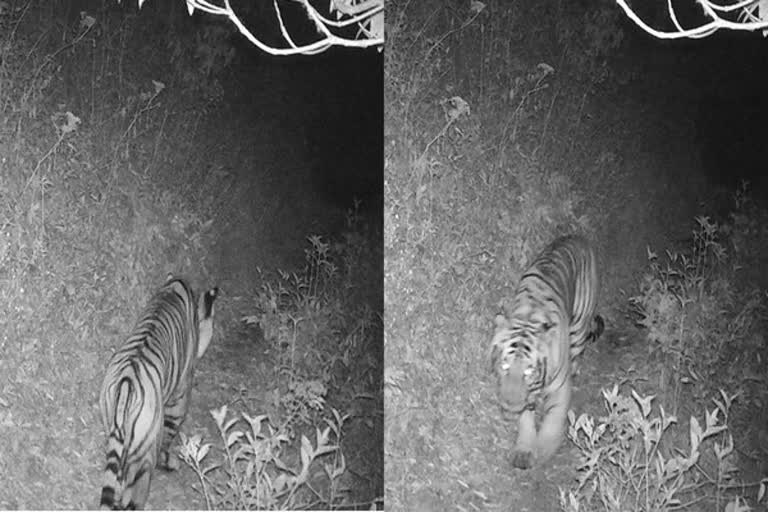Kathmandu: The Royal Bengal Tiger has been sighted at an altitude of 3,165 m above sea level for the first time in Nepal, raising concerns about the impact of global warming on wildlife.
"The majestic Royal Bengal Tiger (Panthera Tigris), the largest of all Asian big cats, was captured on November 13 and November 21 at an elevation of 3,165 m by a camera trap set up in a forest in Illam district of eastern Nepal. It is the country's very first photographic evidence of tiger sighting in the mountains of the eastern region," a joint press release issued by the two departments read.
After spotting tigers at the high altitude of the Himalayas in Nepal for the first time, both the departments stressed the need for special attention in the area where lynxes were also spotted lately.
"This sighting demonstrates the importance of the Kanchenjunga Landscape in eastern Nepal, and it needs special attention since the forests provide connectivity to India's Singalia National Park in north Sikkim and Dooars in North Bengal," the release stated.
Earlier, Bhutan had captured a tiger on camera at an altitude of 4,038 m in 2018, while India's Arunachal Pradesh recorded a sighting at Dibang Valley at an elevation of 3,630 m.
Sighting of the tiger at such elevations has raised concerns about the impact of global warming as well as possible depletion of habitats of the carnivore, which is enlisted as an endangered species.
Read:| AUS: Taronga wildlife hospital staff conduct health check on Sumatran tiger cub
World Tiger Statistics released in 2016 had recorded a total of 2,226 big cats in India, 433 in Russia, 371 in Indonesia, 250 in Malaysia, 198 in Nepal, 189 in Thailand, 106 in Bangladesh, 103 in Bhutan, seven in China, five in Vietnam and two in Laos.
On World Tiger Day on July 29 this year, Nepali Prime Minister K P Sharma Oli had mentioned that global warming is hampering tiger conservation.
"Despite the efforts being made by the countries hosting the tigers, depletion of vegetation, increased human-wildlife conflict, poaching and hunting, illegal trade of animal organs, the danger of climate change and various diseases have increased the challenges in the field of tiger conservation," Oli said.
In the last census in 2018, Nepal counted a total of 235 tigers. As per the latest census, there are 93 tigers at Chitwan National Park, 87 in Bardiya National Park, 16 in Shuklaphanta, 21 in Banke and 18 in Parsa.
The number had increased from the preceding five years. In 2013, the Chitwan National Park had recorded 120 tigers, Baridya 50, Suklaphanta 17, Parsa seven, and Banke four tigers, taking the number to 198.
In 2009, the number of tigers was recorded at 121. At the end of the last decade, Nepal, along with 13 other countries, had agreed on a framework to double the number of the carnivore.
Nepal has set a target of taking the number of tigers to 250 by 2022 when the next tiger census takes place. Currently, tigers are found in five national parks in the Tarai Arc Landscape covering 18 districts and seven biological corridors in the plains of Nepal.
The Royal Bengal Tiger is listed as "Endangered" in the International Union for Nature Conservation (IUCN) Red List of Threatened Species and protected in Nepal.
ANI
Read:| Tigress Naina seen walking with four cubs in Kanha Tiger Reserve



